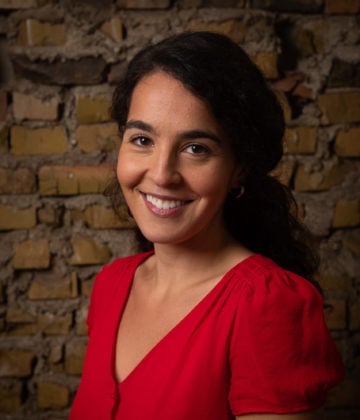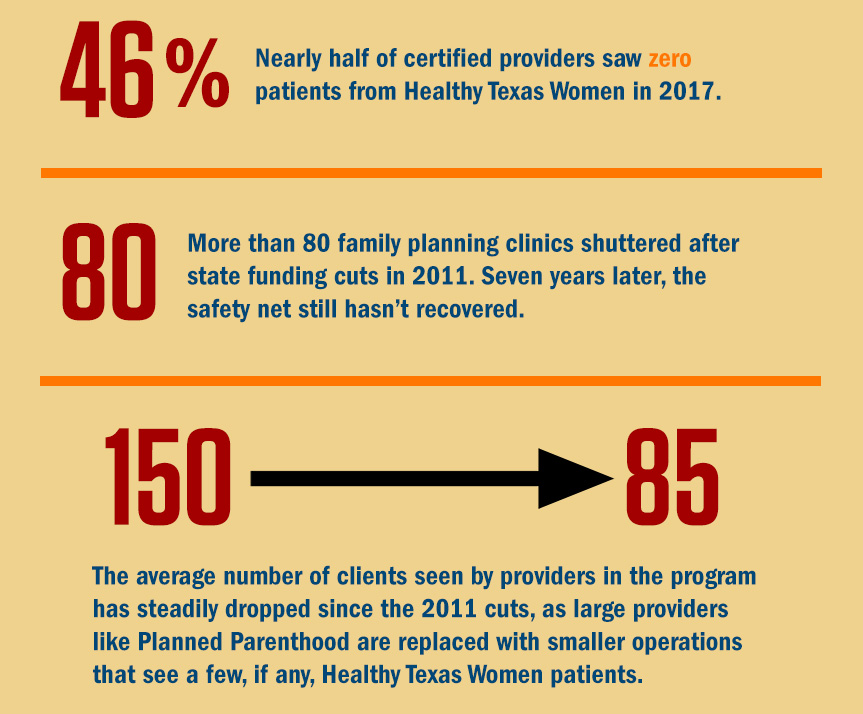
Lawmaker: State Metric for Success of Women’s Health Program is ‘Totally Misleading’
New data shows nearly half of the providers in the low-income Healthy Texas Women program saw zero patients last year.

Texas’ health agency touts its growing provider list as evidence that the state’s low-income women’s health program is rebounding after devastating budget cuts and the exclusion of Planned Parenthood. But reproductive rights advocates have long said that the number of providers is a poor measure of success, in part because the list has repeatedly been found to be inaccurate and inflated. Now, a new report from the Texas Health and Human Services Commission (HHSC) shows that nearly half of the more than 5,000 providers didn’t serve any patients in the program last year. Meanwhile, the agency won’t tell state lawmakers about the most important metric: whether the number of patients served is higher or lower than it was before the closure of more than 80 family planning clinics due to 2011 funding cuts.
“The fact that the agency is using the number of providers as a metric of success is totally misleading,” state Representative Donna Howard, D-Austin, told the Observer. “The number of providers does not give us any information about how successful the program is in terms of reaching clients; it’s about the number of clients served, and the capacity of the providers.”
While the number of clients served in the program, called Healthy Texas Women, increased from 2016 to 2017, Howard said that’s not surprising given the significant marketing investment by the state, and new auto-enrollment policy for women who were on Medicaid while pregnant. But the state is far from meeting the demand for reproductive health care, she said. For example, less than a quarter of women in Texas who need publicly funded contraception are getting these services. “We’re not seeing real capacity proven in this report,” Howard said.
Experts say the program’s provider network is unable to meet growing demand. The state’s own data shows that the gaps left by Planned Parenthood have largely been filled by small providers that generally can’t see as many patients and don’t have the same range of contraceptive options or necessary training. This is evident by the fact that the average number of clients served per provider has dropped consistently in the last several years, from 150 in 2011 to 85 in 2017. That’s likely “driven by adding a whole bunch of tiny [providers], adding a bunch of zeros to the list,” said Stacey Pogue, a senior policy analyst for the left-leaning Center for Public Policy Priorities, who has long tracked women’s health programs in Texas.

Planned Parenthood previously saw more than 40 percent of clients in the low-income women’s health program, before it was kicked out in 2013. Meanwhile, the state’s safety net is still recovering from 2011 budget cuts aimed at the reproductive health care giant that ended up closing a quarter of the state’s family planning clinics.
A HHSC spokesperson defended the Healthy Texas Women provider network, saying the agency encourages doctors to participate, regardless of the number of clients they see. “One provider who sees one patient is one more client who received care,” Christine Mann wrote in an email.
But just how many patients are served by each provider remains unknown, despite a requirement added by Howard last legislative session that HHSC include such information in the report. The information was requested to determine which providers are filling in for Planned Parenthood, and whether contracted providers are meeting their obligations. Asked by the Observer why the data wasn’t included, Mann said HHSC staff “interpreted the [Legislature’s] rider language differently.”


